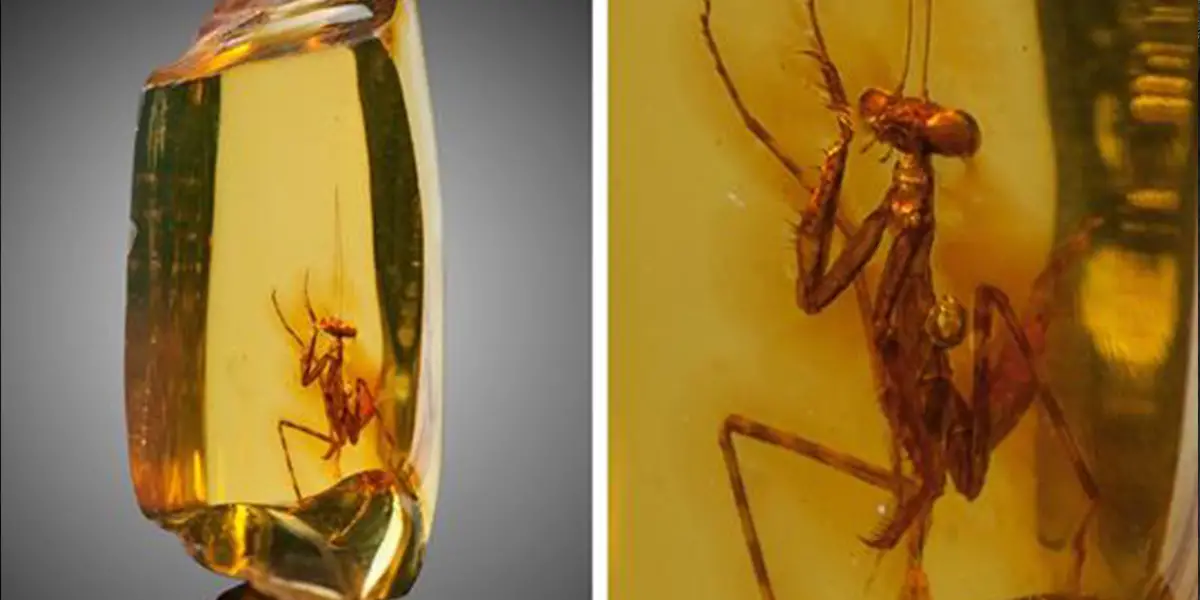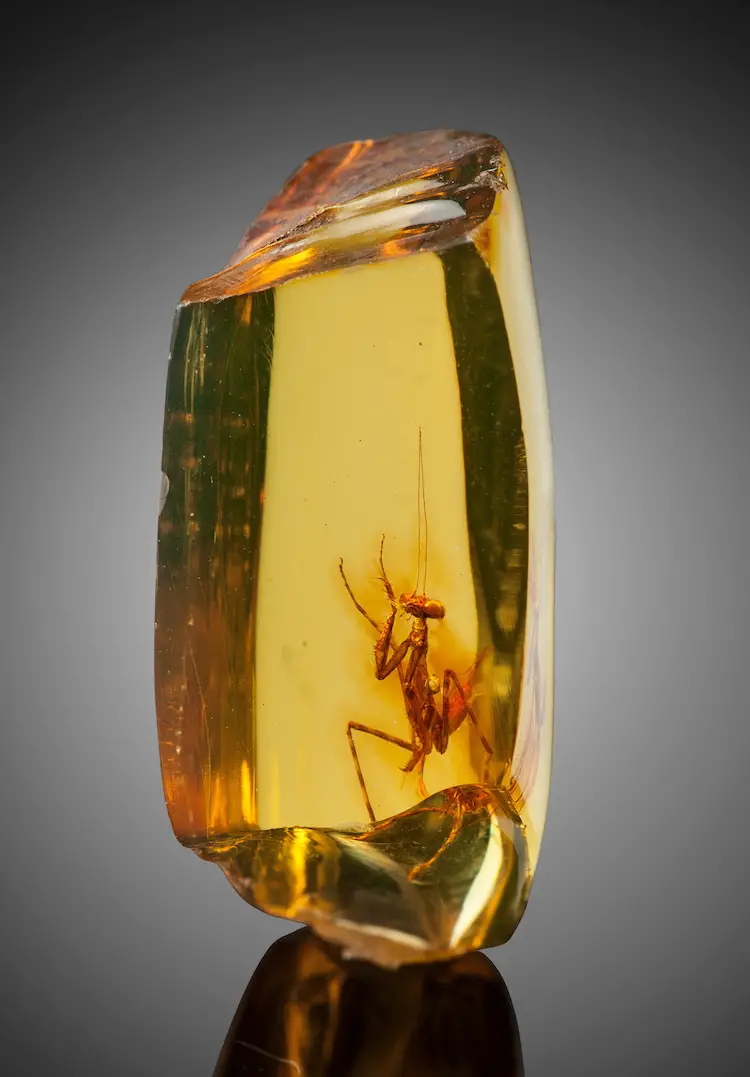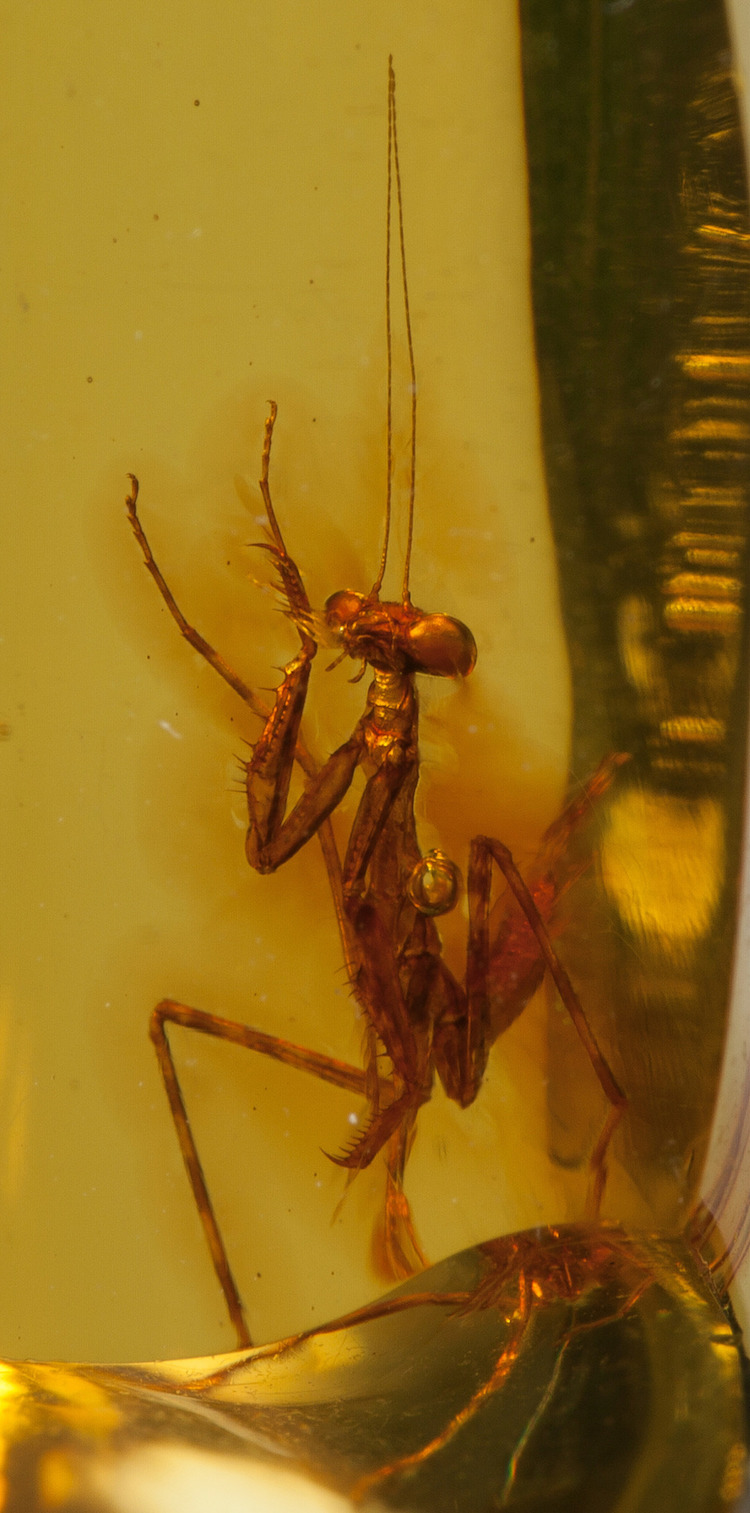
There is an incredible natural process in which insects and even animals can become entombed in tree sap that eventually becomes amber, keeping them frozen in time forever. This real phenomenon was highlighted and popularized by the blockbuster film Jurassic Park, where a scientist character was able to extract dinosaur blood from mosquitos that were trapped in amber.
In 2016, a small praying mantis that was perfectly intact in a piece of amber was sold through Heritage Auctions for $6,000. The incredible piece was discovered somewhere in the Dominican Republic. Heritage Auctions estimates that this piece dates back to the Oligocene period, which means that it is anywhere between 23 million and 33.9 million years old.

According to the auction description from a similar sale:
“This present specimen boasts one of the rarest and most sought after of all inclusions; the Praying Mantis. When found at all, these ferocious insects are usually distorted or lacking limbs due to their fearful struggle to escape the inexorable ooze. This example, however, is preserved to perfection, right down to the color patterns on its slender legs, fine arm spikes, delicate antennae, and large compound eyes. An incredible snapshot of ancient life, the insect measures approximately ½ inch long encased in a lovely polished golden nugget measuring 1¾ x 1¼ x 1 inches. As an added attraction; the piece also contains three large and perfectly preserved click beetles, making it a superb museum-quality specimen.”

Animals can also be preserved in Amber in a similar way. Last year, researchers found the preserved remains of a baby snake that they believed to be 99 million years old.
Michael Caldwell, a professor in the biological sciences department at the University of Alberta in Canada, is one of the researchers who studied the snake specimen. Caldwell and his team named the specimen, Xiaophis myanmarensis.
“Even though it is a baby, there are very unique features of the top of the vertebrae that have never been seen before in other fossil snakes of a similar kind. Xiaophis fits into the base of the snake family tree, and into a group of snakes that appear to be very ancient,” Caldwell toldLiveScience.
“Amber collects everything it touches — kind of like super glue — and then holds onto it for a hundred million years. When it caught the baby snake, it caught the forest floor with the bugs, plants and bug poop — so that it is clear the snake was living in a forest,” he said.


No comments:
Post a Comment